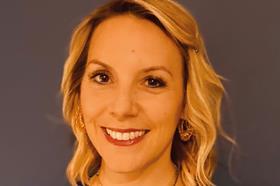Women’s refuges offer life-saving services to those fleeing abuse and are designed as places of both physical and psychological sanctuary. So when women’s organisations raised concerns that confidential addresses were being inadvertently disclosed through court papers, causing ‘significant harm’ to vulnerable clients and their children residing at refuges, this placed pressure on the courts to act.

Court orders can be served on a refuge including in situations when a woman residing there becomes involved in family litigation or when there is an application to trace a child believed to be at risk of abduction.
The president of the Family Division Sir Andrew McFarlane has now published a judgment highlighting new guidance that will better protect those seeking sanctuary in women’s refuges from the improper use of location orders served by the courts.
In offering guidance to judges and lawyers McFarlane has made clear that documents should only ever be served in person at the secret addresses in circumstances which are ‘truly exceptional and urgent’.
His judgment outlines alternative safer approaches on serving court papers including through the intended recipient’s legal representative, via a secure PO box or administrative address provided by the refuge for this purpose or by using email, text or WhatsApp. ‘Where personal service is to be made at a refuge, it should be undertaken by a court bailiff or the tipstaff and, where possible, using female officers in plain clothing,’ he wrote.
The address of a refuge must never be disclosed to the alleged perpetrator or to their solicitor, he added.
Past problems
The guidance follows a High Court hearing last year before Mrs Justice Knowles who was considering arrangements between a mother living at a refuge and the child’s other parent who was seeking to trace them via a court application.
As part of the case the refuge raised concerns that draconian orders were being made against the mother, named staff at the refuge and other agencies. One application demanded the refuge address be handed to the solicitor for the other party against whom the mother had made allegations of domestic abuse.
Representing Latin American Women’s Aid (LAWA), barrister Dr Charlotte Proudman said it was the third instance in which the High Court had served an order on her client.
The hearing was held in private but documents submitted to the family court were shared with journalists following an application I made to have the automatic reporting restrictions varied. The submissions included a letter from Proudman which explained the service of similar orders had resulted in ‘significant harm’.
On one occasion the refuge address was mistakenly disclosed to a father who was a perpetrator of domestic abuse. He began stalking his child and their mother, meaning they had to leave the refuge and relocate. He later abducted the child, taking them abroad.
Knowles dismissed the location order and proceedings concerning the family were transferred back to the Central Family Court.
However the High Court retained consideration of the wider issue of serving orders on residential refuges. Two further women’s organisations – Women’s Aid and Refuge – joined the case as interveners along with the secretary of state for justice, represented by the barrister Dr Jason Pobjoy.
Pobjoy put to the court that present arrangements under the Family Procedure Rules permit the court to direct an alternative form of service where there is a ‘good reason’ for doing so.
The women’s organisations highlighted that personal service of court orders at a refuge had a distressing impact, not only on the recipient of the order, but on all those residing there.
Following the submissions McFarlane laid out the safer, more appropriate arrangements for serving court papers in his judgment.
Welcoming the guidance, Farah Nazeer, chief executive at Women’s Aid, stressed: ‘For too long we have seen… safety undermined by the personal service of court orders on women living in refuges, when safer alternatives were always available.’
Intersectional approach
McFarlane’s judgment goes broader than the simple matter of service. Beyond highlighting these safer alternatives, it says court orders must be appropriately translated when serving migrant women – it is not the duty of the refuge to provide a translator.
And the guidance makes clear individual refuge staff should not be ordered to disclose confidential information. Instead, all formal contact should be restricted to liaising with a refuge’s CEO or director.
Proudman, who acted on behalf of the three women’s organisations, welcomed in particular the reference to migrant women’s ‘intersectional inequalities’ which McFarlane said the courts should be alive to.
In a joint submission from the organisations, Proudman wrote: ‘The mere fact of being a migrant woman with historic links in another country, insecure immigration status or having no recourse to public funds is not sufficient to show there is a risk of abduction. The act of seeking refuge mitigates against any risk that might exist.’
Important precedent
Those tasked with the provision of refuges have said guidance sets an important precedent with regard to migrant women.
Angie Herrera, director at LAWA, also addressed the issue of presumptions around abduction: ‘In the three cases LAWA has dealt with since 2019, we believe these orders stem from the discriminatory and disproportionate presumption that there is increased risk of abduction of the child by the mother because of her being a migrant.’
Olive Craig, senior legal officer for Rights of Women, said: ‘We really hope this case will lead to judges thinking more carefully about arguments that are discriminatory and refusing to accept them.’
Hannah Summers is a freelance journalist





























No comments yet